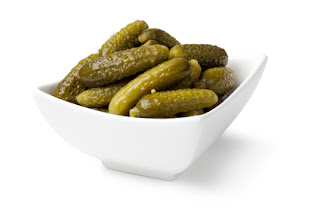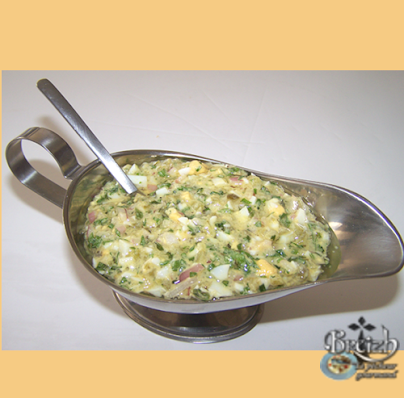from
Behind the French Menu
by
Bryan G. Newman
behindthefrenchmenu@gmail.com
Cendre de Chamapgne
Cendré de Champagne - A soft, 13% fat, cow's milk cheese with a white to ivory color and a natural and dusty gray, ashen rind. The ripe cheese is almost spreadable with a light mushroom smell and a taste like a lightly smoky Brie. As the cheese’s name indicates, it comes from France’s Champagne growing region with the word Cendré, meaning ashes or cinders and that points to the wood ashes through which the cheese passes while aging. The very best Cendré de Champagne cheeses are made with unpasteurized milk, and all have a relatively low-fat content of 13%. The rind is natural and edible, but this rind with its ash covering is best left uneaten.
As you may expect the wine recommended to pair with this cheese is Champagne, I, however, enjoyed it while in Burgundy and then the cheeses on the table were accompanied by a Chablis.
No AOC or AOP
Cendre de Champagne has no AOC/AOP, but that may just indicate a lack of national interest because its taste is up there with the best. France has over 450 registered cheeses with hundreds more unregistered with some made on a single farm. As you drive around you will find many alluring cheeses in local fromageries, cheese shops. Many local cheeses have limited production, but are well-known locally, like the Cendre de Champagne. Some may have memorable tastes as good as some of the 46 cheeses with an AOP. If you buy a local cheese, try one of the local French breads and possibly a Traditional Baguette if it is available.
Cendre de Champagne
The cheese is aged for 6-8 weeks before sale with about two of those weeks aging in poplar or beech wood ash that gives the cheese its smoky taste. You can buy the cheese in two sizes; the smaller is the “Petite” that weighs 250 grams (9 ounces) and comes with disk similar in size to a small Camembert, but without the wooden box; the larger size weighs 400 grams (14 ounces).
Cendre de Champagne
Other cheeses from the same region
The most famous cheeses in and around the area where the Champagne vineyards include the cow’s milk Langres AOP and Chaource AOP; both these cheeses are also produced just over the border in Burgundy. Other local cheeses, aged in ash in a similar manner to the Cendré de Champagne, include the Cendré d'Argonne a cow’s milk cheese and a goat's milk cheese the Cendrés des Riceys.
The Champagne vineyards of France
The Champagne vineyards of France begin just 100 km (62 miles) north of Paris; that’s 45 minutes with the fastest trains to Reims, the city that is the headquarters of many Champagne houses. The other major Champagne city is Epernay; 28 km (17 miles) and 20 minutes by train from Reims.
.
Not everyone wants Champagne for breakfast, lunch, and dinner, despite the attractive local prices; ask for the still Coteaux Champenois AOC whites, reds and rosé wines. These are wines from the same region and predate Champagne. Make sure you check the vintner and the year in your up-to-date French wine book or have a clear recommendation from a qualified sommelier.
Local products on menus and in the supermarkets.
On local menus and in supermarkets all over France you will find the Lentillons Rosé de Champagne - The pink lentils of Champagne.
The pink lentils of Champagne on French menus:
L´Œuf Poché à la Crème de Chaource ou de Lentillons Rosé de Champagne – A French entrée of a poached egg in a cream of Chaource cheese sauce served on a bed of the pink lentils of Champagne.
Also from the area comes the Moutarde de Reims, a pungent mustard, very different to Dijon Mustard. It is made with brown mustard seeds, champagne vinegar, and herbs. That's a good use of by-products from the Champagne Industry. The Reims Champagne Vinegar is also a great addition to the flavor of vinaigrette dressings.
The Reims mustard on French Menus:
Véritable Andouillette de Troyes AAAAA, Sauce Moutarde De Reims – The famous AAAAA Andouillette tripe sausages from Troyes served with a Reims mustard sauce.
Seen at all Champagne tastings is the Biscuit Rose de Champagne – A pink biscuit developed to attract those who will dip it in champagne. Now also part of local recipes and desserts.
Moutarde de Reims
Enjoying the City of Reims
Apart from tours of the cellars of the grand Champagne houses, there are separate tastings, which are worth paying for if they offer a true diversity of tastes; that means including semi-sweet, dry. brut and ultra brut. You will be offered the pink Reims biscuit between each Champagne flute or coupe. N.B. Never ever use the word verre, glass, when drinking Champagne. (For an explanation of the different sizes of Champagne, and other bottles, in France click here).
Do not miss the architectural wonder, the Reims Cathedral called the Notre-Dame de Reims. In this cathedral, most of the Kings of France were crowned with the crown of Charlemagne. Then outside Reims allow time for relaxation and that includes the Lake Der-Chantecoq; the largest artificial lake in Western Europe. This lake was built to take water away from the River Marne which led to the River Seine causing floods in Paris nearly every year. Now the lake is a bird sanctuary with swimming and watersports. Other nearby lakes provide swimming, watersports, and a great deal of gratification for freshwater anglers.
Do not miss the architectural wonder, the Reims Cathedral called the Notre-Dame de Reims. In this cathedral, most of the Kings of France were crowned with the crown of Charlemagne. Then outside Reims allow time for relaxation and that includes the Lake Der-Chantecoq; the largest artificial lake in Western Europe. This lake was built to take water away from the River Marne which led to the River Seine causing floods in Paris nearly every year. Now the lake is a bird sanctuary with swimming and watersports. Other nearby lakes provide swimming, watersports, and a great deal of gratification for freshwater anglers.
Reims Cathedral at night
Until 1-1-2016 the Champagne grape vineyards were part of the old region of the Champagne - Ardennes. That region is now are, together with the regions of Alsace, so famous for its 11 white wines and Lorraine, the source of much of France’s beer and the home of the Quiche Lorraine, part of the new super-region of the Grande Est.
Connected Posts:
Searching for the meaning of words, names or phrases
on
French menus?
Just add the word, words, or phrase that you are searching for to the words "Behind the French Menu" and search with Google. Behind the French Menu’s links include hundreds of words, names, and phrases that are seen on French menus. There are over 470 articles that include over 4,000 French dishes with English translations and explanations.
















